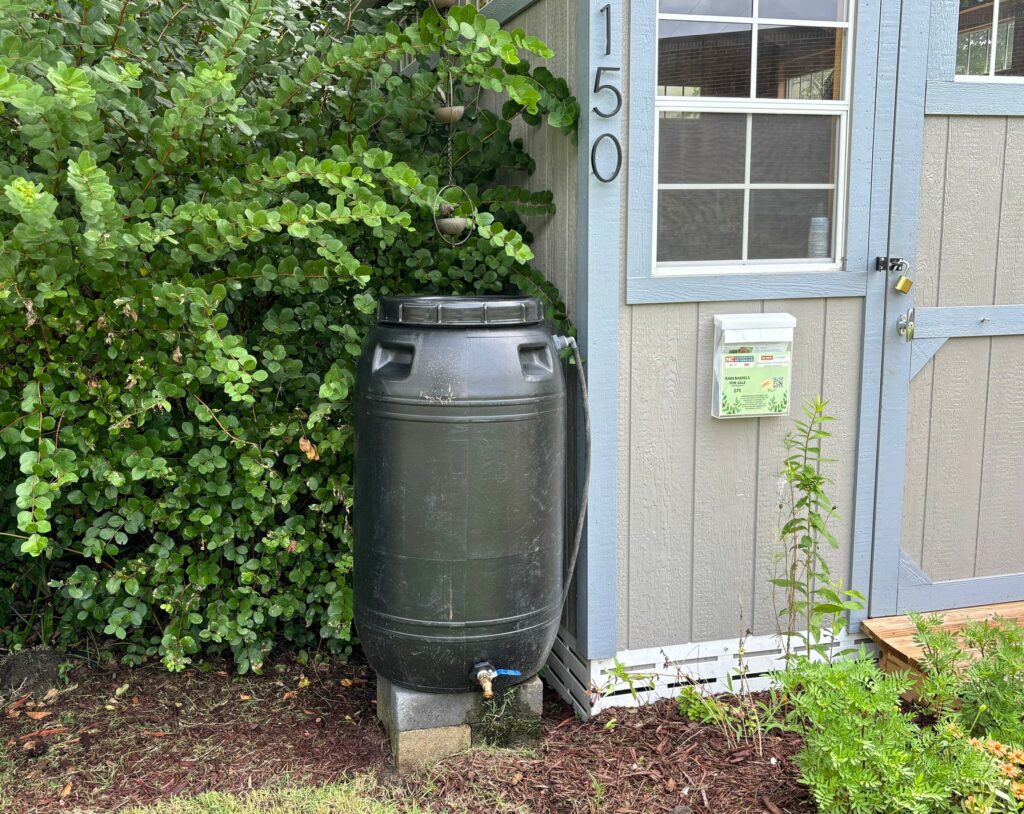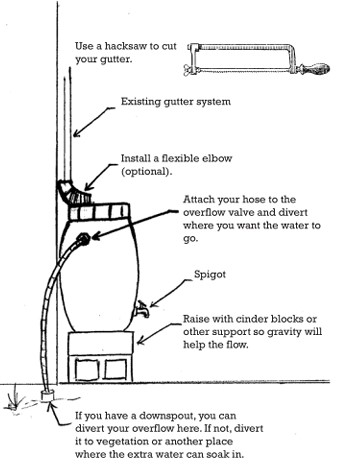Rain Barrels
go.ncsu.edu/readext?1016372
en Español / em Português
El inglés es el idioma de control de esta página. En la medida en que haya algún conflicto entre la traducción al inglés y la traducción, el inglés prevalece.
Al hacer clic en el enlace de traducción se activa un servicio de traducción gratuito para convertir la página al español. Al igual que con cualquier traducción por Internet, la conversión no es sensible al contexto y puede que no traduzca el texto en su significado original. NC State Extension no garantiza la exactitud del texto traducido. Por favor, tenga en cuenta que algunas aplicaciones y/o servicios pueden no funcionar como se espera cuando se traducen.
Português
Inglês é o idioma de controle desta página. Na medida que haja algum conflito entre o texto original em Inglês e a tradução, o Inglês prevalece.
Ao clicar no link de tradução, um serviço gratuito de tradução será ativado para converter a página para o Português. Como em qualquer tradução pela internet, a conversão não é sensivel ao contexto e pode não ocorrer a tradução para o significado orginal. O serviço de Extensão da Carolina do Norte (NC State Extension) não garante a exatidão do texto traduzido. Por favor, observe que algumas funções ou serviços podem não funcionar como esperado após a tradução.
English
English is the controlling language of this page. To the extent there is any conflict between the English text and the translation, English controls.
Clicking on the translation link activates a free translation service to convert the page to Spanish. As with any Internet translation, the conversion is not context-sensitive and may not translate the text to its original meaning. NC State Extension does not guarantee the accuracy of the translated text. Please note that some applications and/or services may not function as expected when translated.
Collapse ▲ The North Carolina State Climate Office has indicated that our region will continue to see long periods of drought, punctuated by intense and heavy rainstorms. This can be a challenge for gardening in times of water scarcity.
The North Carolina State Climate Office has indicated that our region will continue to see long periods of drought, punctuated by intense and heavy rainstorms. This can be a challenge for gardening in times of water scarcity.
Homeowners can take advantage of the water nature gives us. Using a rain barrel or cistern to collect rainwater can lower your water bill, be good for your plants, and protect the environment by reducing runoff from your property.
A rainwater harvesting or rain barrel system captures stormwater runoff, usually from a rooftop, and stores that water for later use. Using harvested rainwater for purposes that don’t require treated drinking water has many advantages:
- It reduces the demand on municipal water supplies and thus increases the sustainability of drinking water supplies.
- Its use may be exempt from restrictions during a drought.
- It can reduce water bills, meaning the system can partially pay for itself.
- It can protect local water quality by capturing nutrients and other pollutants from rooftop runoff, preventing them from contaminating surface waters.
- It can contribute valuable plant nutrients, such as nitrogen and phosphorus, to garden irrigation water.
The N.C. Cooperative Extension – Brunswick County Center in partnership with our Extension Master Garden Volunteer Association offers rain barrels for sale. These rain barrels are made using repurposed food-grade barrels, so they also help with “reduce, reuse, and recycle”. The completed rain barrels come with a brass faucet, an overflow pipe, and screened water inlet.
Rain Barrels may be purchased at EMGVA Plant Sales or at any time during office hours at our Extension office. The cost is $75 and we accept cash or checks made out to BC EMGVA.
To Install your Rain Barrel:
- Determine the location for your rain barrel, ideally under an existing downspout.

- Remember that a full rain barrel with be very heavy, so it is important to position your barrel on level ground to avoid it tipping over.
- You will need to elevate your rain barrel using cinder blocks, pavers, or other materials. This will help you access the faucet and give you a gravity assist with the flow of the water.
- Use a hacksaw to cut existing downspout and install a flexible elbow to direct water into the barrel.
- Rain barrels fill up quickly and you’ll need to plan for where to direct overflow. Attach an appropriate length of hose to the overflow pipe to direct water to a vegetated area or rain garden.
Rain Barrel Diagram credit: Snohomish Conservation District



